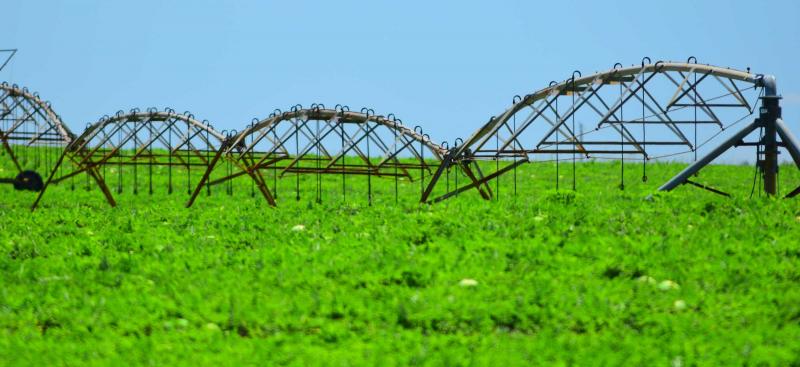Assisting the agricultural community by improving irrigation efficiency and conserving water.
The Mobile Irrigation Lab program is an ongoing joint effort between the District, the U.S. Department of Agriculture–Natural Resources Conservation Service (USDA–NRCS) and the agricultural community. The program began in 1987 to assist the District in meeting its statutory responsibilities and to assist growers with water conservation.
The Mobile Irrigation Lab is a free volunteer service to the agricultural community. Any grower can contact the District to arrange a free evaluation. It was expanded to help growers meet water use permit conditions. District staff has used high pumpage reports to identify users who might wish to voluntarily reduce water use before a resource problem or permit violation occurs.
A trained technician is invited to a grower’s field and collects irrigation system and specific field data. System pressure and irrigation uniformity data are then reviewed and computer-analyzed. A report provides recommendations for improvements and irrigation schedules. If needed, the technician assists the local NRCS office in the redesign of the system.
An irrigation schedule offers a general guide to determine when and how much to irrigate based on system efficiency, crop requirements and soil characteristics. The technician returns several times for further data collection and review with the grower, installation of free soil moisture-sensing devices to help adapt the schedule to the site and calibration and maintenance of the devices.
In addition to the benefits of free irrigation evaluations, water conservation and water quality improvements, the program shares valuable technology and information with growers.
Mobile Irrigation Lab data suggests that most evaluated systems are already at or above permitted efficiency standards. With only minor improvements, about half the sites below these standards could easily meet them. Typically, if all recommendations are implemented, overall system irrigation efficiency can improve by an estimated 17 percent — helpful to any grower’s bottom line, as well as the region’s water resources.

